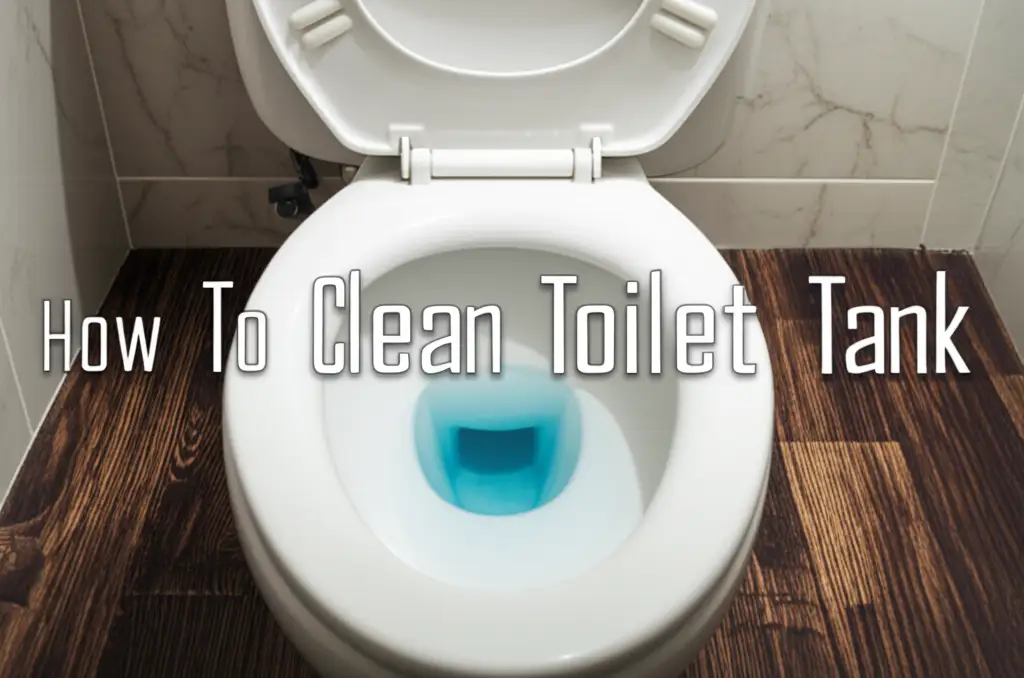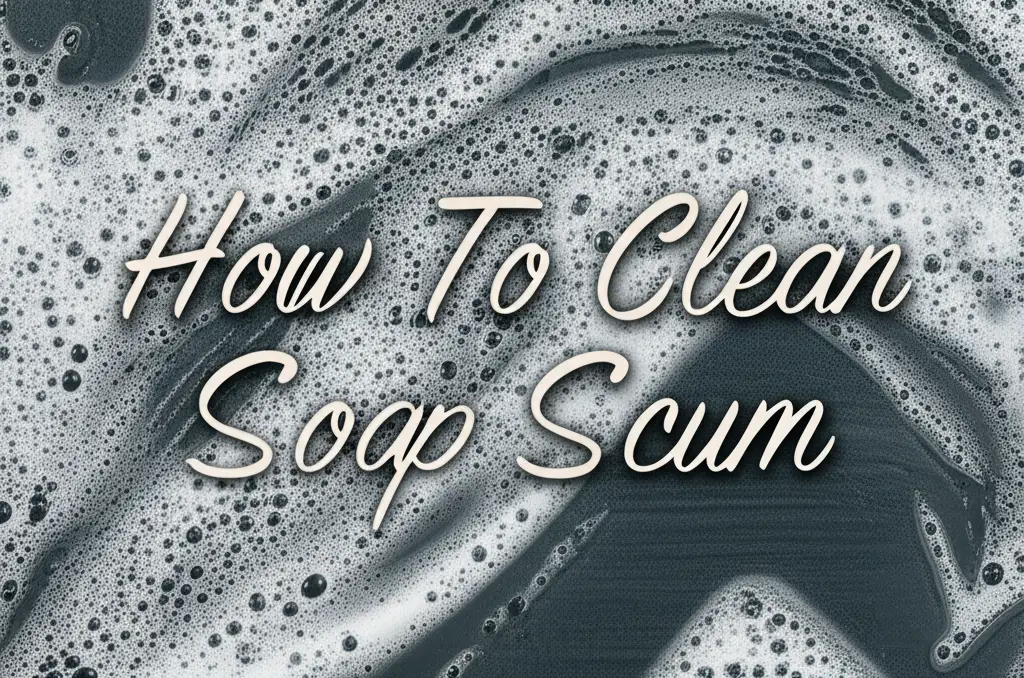· Home Cleaning · 15 min read
How To Clean Toilet Tank

Effortless Ways to Clean Your Toilet Tank
Have you ever wondered what truly hides inside your toilet tank? Most people clean the bowl and seat. They often forget the tank itself. But the toilet tank holds all the water. This water flushes the toilet. Over time, bacteria, mold, mildew, and mineral deposits build up inside. This buildup impacts your toilet’s performance and hygiene. It can also cause unpleasant odors. Learning how to clean toilet tank components properly is simple. It makes a big difference in your bathroom’s cleanliness.
This article provides a complete guide. You will learn the importance of tank cleaning. I will share a step-by-step method. I also include natural cleaning solutions. You will find tips for maintaining a clean tank. A clean toilet tank helps your toilet run better. It also keeps your bathroom smelling fresh. Let us get started on this important cleaning task.
Takeaway:
- Empty the toilet tank completely before you start cleaning.
- Use a non-abrasive brush to scrub the interior surfaces.
- Choose a suitable cleaner, either commercial or natural like vinegar or baking soda.
- Rinse the tank thoroughly to remove all cleaning agents and loosened debris.
- Regular maintenance prevents future buildup and keeps your toilet hygienic.
To clean a toilet tank, first turn off the water supply and flush the toilet to empty it. Next, scrub the inside surfaces with a long-handled brush and a suitable cleaner. Rinse the tank completely before refilling it. This removes mineral deposits and eliminates mold effectively.
Why You Should Clean Your Toilet Tank Regularly
Many people overlook the toilet tank. They only clean the bowl. However, the toilet tank is the heart of your toilet system. It stores the water that flushes your toilet. Dirty water in the tank affects the bowl. This is a simple fact.
Over time, sediment, hard water minerals, and slime accumulate inside the tank. This buildup leads to several problems. It can reduce flushing efficiency. It may also damage internal parts. A dirty tank becomes a breeding ground for mold and bacteria. These can cause bad odors. They can also affect your home’s air quality. Regular cleaning makes your toilet more efficient. It also helps prevent costly repairs. It ensures a healthier bathroom environment for everyone.
Think about the water quality in your area. If you have hard water, mineral deposits will build up faster. These deposits are tough. They look like white or brown crusts. They can clog the small moving parts inside the tank. This makes your toilet work harder. It might even stop working correctly. A clean tank helps extend the life of your toilet. It also helps reduce water waste from inefficient flushing. You will notice a difference in how well your toilet flushes.
Gathering Your Tools: What You Need to Clean Your Toilet Tank
Before you start, gather all your supplies. Having everything ready saves time. It makes the cleaning process smooth. You likely have most of these items at home already. Safety is important too. Protect your hands from cleaning solutions.
Here is a list of what you will need:
- Rubber Gloves: Always wear gloves to protect your hands. Toilet tanks can contain bacteria.
- Old Towels or Rags: These are useful for wiping spills. They also protect your floor.
- White Vinegar: This is a natural, effective cleaner for mineral deposits and mold.
- Baking Soda: Great for scrubbing and deodorizing. You can learn more about how to clean your toilet tank with baking soda here.
- Scrub Brush (long-handled): A toilet brush works well. A stiff-bristled brush on a handle is best. This helps reach all areas inside the tank.
- Sponge or Cloth: For wiping down smaller parts.
- All-Purpose Cleaner or Bleach (Optional): Use if mold is severe. Bleach needs careful handling.
- Bucket (Optional): For removing excess water if needed.
Make sure your cleaning area has good ventilation. Open a window if possible. This is especially important if you plan to use bleach. I find that having everything organized beforehand helps me focus on the task. This also prevents interruptions. Having the right tools ensures you can thoroughly clean the tank.
Step-by-Step Guide to Cleaning Your Toilet Tank
Cleaning your toilet tank is a straightforward process. Just follow these steps carefully. You will see a cleaner tank in no time. This method ensures you cover all important areas. It also prevents any mess.
Step 1: Prepare the Toilet Tank
First, you need to turn off the water supply to the toilet. Look behind or under your toilet bowl. You will see a small valve on the wall. Turn this valve clockwise until the water flow stops. This stops new water from entering the tank. Next, flush the toilet. This action empties the tank. Hold the flush handle down until all water has drained. There might be a small amount of residual water at the bottom. This is normal.
Step 2: Apply Your Cleaner
Now that the tank is empty, choose your cleaning solution. For mild buildup, white vinegar works wonders. Pour 2-3 cups of undiluted white vinegar directly into the empty tank. Make sure it reaches the bottom and splashes up the sides. For tougher stains or mold, you might use a toilet cleaner specifically designed for tanks. Some people use a small amount of bleach, but be very careful. Never mix bleach with vinegar or other cleaners. Let the cleaner sit for at least 30 minutes. For heavy buildup, leave it overnight. This gives the cleaner time to break down deposits and kill germs.
Step 3: Scrub the Interior
Put on your rubber gloves. Take your long-handled scrub brush. Begin to scrub all interior surfaces of the tank. Pay attention to the water line. This area often has a visible ring of grime. Scrub the sides, the bottom, and around all the tank’s mechanisms. These include the fill valve and the flush valve. If you notice any stubborn spots, apply a little more cleaner. Use a sponge for smaller parts or areas the brush cannot reach. Do not use abrasive pads. These can scratch the porcelain. A soft bristle brush helps keep the porcelain pristine.
Step 4: Rinse and Refill
After scrubbing thoroughly, turn the water supply back on. Turn the valve counter-clockwise. Let the tank fill up completely with fresh water. Once full, flush the toilet several times. This helps to rinse away the cleaning solution and loosened debris. You might see some dirty water during the first few flushes. This is normal. Continue flushing until the water runs clear. This step is important. It removes all traces of the cleaner. This protects the tank components from corrosion. It also prevents any cleaning solution from entering your toilet bowl water.
Step 5: Final Inspection
Look inside the tank one last time. Make sure it looks clean. Check for any remaining grime or mineral deposits. If you find any, repeat the scrubbing process for those areas. Your toilet tank should now be sparkling clean. This detailed cleaning process makes a big difference. It improves toilet performance. It also keeps your bathroom smelling fresh. I always feel a sense of accomplishment after this task. For broader toilet cleaning, consider tips on how to clean a porcelain toilet.
Natural Cleaning Solutions for Your Toilet Tank
Using natural cleaners is safe and effective. They are also gentle on your toilet’s components. White vinegar and baking soda are my go-to choices. They tackle most toilet tank issues. These methods avoid harsh chemicals. This is good for your health and the environment.
Using White Vinegar
White vinegar is a powerful natural cleaner. It contains acetic acid. This acid breaks down mineral deposits and hard water stains. It also kills mold, mildew, and many types of bacteria. To use vinegar, first empty your toilet tank as described in Step 1. Pour 2-3 cups of undiluted white vinegar into the tank. Ensure it reaches all surfaces. For a deeper clean, let it sit overnight. The longer it sits, the more effectively it works. After soaking, scrub the tank thoroughly with a brush. Then, turn the water back on and flush several times to rinse. Vinegar is safe for pipes and septic systems.
Using Baking Soda
Baking soda is another excellent natural cleaner. It is a mild abrasive. This helps scrub away grime without scratching surfaces. It also deodorizes. To use baking soda, empty the tank first. Sprinkle 1 cup of baking soda liberally over the interior surfaces. Pay attention to stained areas. You can also make a paste with baking soda and a little water. Apply this paste to stubborn spots. Let it sit for 15-30 minutes. Then, use your brush to scrub. The baking soda will help lift the dirt. After scrubbing, turn on the water and flush to rinse. Baking soda leaves your tank fresh and clean. It neutralizes odors. You can find more details on using baking soda specifically to clean a toilet tank with baking soda.
You can also combine these two for a powerful cleaning action. After emptying the tank, sprinkle baking soda first. Then, pour vinegar over it. It will fizz. This reaction helps lift tough grime. Let it sit, then scrub and rinse. Always ensure good ventilation when using any cleaner.
Dealing with Stubborn Stains and Buildup in Your Toilet Tank
Sometimes, regular cleaning is not enough. Your toilet tank might have severe hard water stains or extensive mold growth. These issues require a bit more effort. Do not worry. There are effective ways to tackle them. This section helps you deal with those tough cleaning challenges.
Hard Water Stains
Hard water contains high levels of minerals like calcium and magnesium. These minerals leave chalky white or reddish-brown deposits. These stains are very common in toilet tanks. Vinegar is excellent for these. As mentioned before, a long soak with undiluted white vinegar is key. For extremely thick deposits, you might need a dedicated hard water cleaner. Follow the product instructions carefully. Some cleaners contain phosphoric acid. This acid dissolves mineral buildup effectively. Apply the cleaner and let it sit for the recommended time. Then, scrub vigorously with your brush. Repeat if necessary. For really tough spots, I sometimes use a non-abrasive scrubber. Be gentle to avoid damaging the porcelain.
Mold and Mildew Growth
Mold and mildew thrive in damp, dark environments. Your toilet tank is perfect for them. They often appear as black, green, or pink slimy patches. If you see extensive mold, bleach can be very effective. After emptying the tank, add 1/2 to 1 cup of household bleach to the water that remains. Do not exceed this amount. Let it sit for 15-30 minutes. The bleach will kill the mold. Scrub the affected areas with your brush. Make sure to get into all corners. After scrubbing, turn the water back on and flush multiple times. Bleach is powerful. Always ensure good ventilation. Never mix bleach with other cleaners, especially vinegar. This creates dangerous fumes. If you prefer not to use bleach, a strong vinegar solution can still work. Just allow it to soak longer. Remember to also inspect and clean the toilet fill valve for any mold buildup.
Some stubborn stains might also cling to the underside of the toilet rim. It is a good practice to clean under the rim of the toilet while you are tackling the tank. This ensures a comprehensive clean.
Maintaining a Clean Toilet Tank: Prevention is Key
Cleaning your toilet tank thoroughly is great. But ongoing maintenance is just as important. Regular habits prevent heavy buildup. This saves you time and effort in the long run. It also keeps your toilet functioning perfectly. Prevention is always easier than a deep clean.
Here are some tips for maintaining a clean toilet tank:
- Regular Visual Checks: Look inside your toilet tank once a month. This helps you catch any buildup early. Early detection means easier cleaning. You can quickly wipe away new grime.
- Monthly Vinegar Flush: Pour 1-2 cups of white vinegar into the tank. Do this without emptying it first. Let it sit for at least 30 minutes, or even overnight. Then, flush several times. This simple step helps prevent mineral deposits. It also inhibits mold growth. It is a quick maintenance task.
- Avoid Drop-In Tablets: Many people use drop-in toilet bowl tablets. These are convenient for the bowl. However, they can contain harsh chemicals. These chemicals can damage the rubber and plastic components inside your toilet tank over time. They might also discolor the water or tank. I advise against using them. Stick to manual cleaning for the tank.
- Address Leaks Promptly: A constantly running toilet wastes water. It also allows continuous fresh mineral-laden water into the tank. This accelerates buildup. Fix any leaks as soon as you notice them. This preserves your tank’s cleanliness. It also saves on water bills.
- Clean the Toilet Bowl Regularly: While not directly cleaning the tank, a clean bowl reflects overall toilet hygiene. When you clean the bowl, you are already in the bathroom. This is a good time to quickly check the tank. Use a dedicated toilet brush to keep the bowl sparkling.
Consistent maintenance keeps your toilet tank in top condition. It prevents the need for intense scrubbing sessions. A clean tank means a healthier, more efficient toilet. It is a small effort with big rewards.
Troubleshooting Common Toilet Tank Cleaning Issues
Even with the best intentions, you might encounter some issues. Perhaps the stains are not coming off. Or maybe you notice a strange problem after cleaning. Knowing how to troubleshoot these common issues helps. It ensures your cleaning efforts are successful.
Persistent Stains
If stains remain after scrubbing, you might need a stronger approach. For stubborn hard water stains, try a pumice stone. Wet the stone and gently rub the stained areas. Pumice is abrasive but usually safe for porcelain. Test it in an inconspicuous spot first. Be very gentle. For deep-set mold or mineral rings, consider a stronger, acid-based toilet tank cleaner. Always follow the product’s instructions carefully. Ensure adequate ventilation. Remember to never mix different cleaning products. If the stains are really bad, several applications and long soaking times might be necessary.
Unpleasant Odors After Cleaning
Sometimes, an odor might linger even after you clean the tank. This could be due to several reasons. It might be residual mold or bacteria in hidden spots. Check the overflow tube and the undersides of the plastic components. Use a bottle brush or small detail brush for these areas. The odor might also come from the drain pipe itself. Pour a cup of baking soda down the toilet bowl, followed by hot water. This can help neutralize odors in the drain. Another possibility is sewer gas. If the odor persists, especially a sulfur smell, it might indicate a plumbing issue. In such cases, contact a plumber.
Damaged or Worn Components
During cleaning, you might notice that some components inside the tank look old or damaged. Fill valves, flappers, and flush valves can wear out. Mineral buildup can accelerate this wear. If you see cracks, stiff rubber, or excessive rust, these parts might need replacement. A faulty flapper often causes a running toilet. A damaged fill valve can cause slow refilling. While cleaning, you are inspecting. This is a great time to identify potential repair needs. Replacing a fill valve or flapper is often a DIY task. Replacing them ensures your toilet continues to function efficiently. This is an important part of toilet maintenance.
Addressing these issues helps complete your toilet tank cleaning project successfully. It ensures your toilet not only looks clean but also works perfectly.
FAQ Section
How often should I clean my toilet tank?
You should clean your toilet tank at least once or twice a year for a deep clean. If you have hard water, consider cleaning it more often, perhaps every 3-6 months. Regular monthly maintenance using vinegar helps prevent significant buildup between deep cleans.
Can I use bleach to clean my toilet tank?
Yes, you can use bleach to clean your toilet tank. It is effective for killing mold and bacteria. Use about 1/2 to 1 cup of household bleach. Let it sit for 15-30 minutes. Always ensure good ventilation. Never mix bleach with other cleaners like vinegar, as it creates dangerous fumes.
Is it safe to put cleaning tablets in the toilet tank?
Most plumbers and manufacturers advise against using drop-in cleaning tablets. These tablets often contain harsh chemicals. These chemicals can degrade the rubber and plastic components inside your toilet tank over time. This leads to costly leaks or damaged parts.
What causes the slime in my toilet tank?
The slime in your toilet tank is usually a combination of bacteria, mold, mildew, and mineral deposits. It thrives in damp, dark environments. Iron bacteria, which feed on iron in water, can cause reddish-brown or black slime. Regular cleaning removes this slime and prevents its return.
Will cleaning my toilet tank improve flushing performance?
Yes, cleaning your toilet tank can significantly improve flushing performance. Mineral deposits and buildup can interfere with the proper function of internal parts like the fill valve and flapper. Removing these obstructions allows water to flow freely. This makes your toilet flush more efficiently.
What should I do if my toilet tank still smells after cleaning?
If your toilet tank still smells after cleaning, check for hidden mold or buildup in less accessible areas like the overflow tube or the undersides of plastic components. You can also try pouring a cup of baking soda down the toilet bowl. If a strong sulfur smell persists, it might indicate a deeper plumbing issue requiring a professional plumber.
Conclusion
Cleaning your toilet tank might seem like an extra chore. But it is a vital part of proper bathroom maintenance. We have explored why it is important. A clean tank helps your toilet work better. It also creates a healthier home environment. You now have a complete guide. You know the tools you need. You understand the step-by-step process. You also have options for natural cleaning.
Remember, consistency is key. Regular maintenance prevents heavy buildup. This saves you time and effort later. Take pride in knowing your entire toilet is clean. A clean toilet tank means a more efficient toilet. It also means a fresher bathroom. Take action today. Dedicate some time to this essential task. Your toilet and your home will thank you for it. Keep your home sparkling clean, one tank at a time.
- toilet tank cleaning
- bathroom cleaning
- home hygiene
- cleaning tips
- hard water stains




